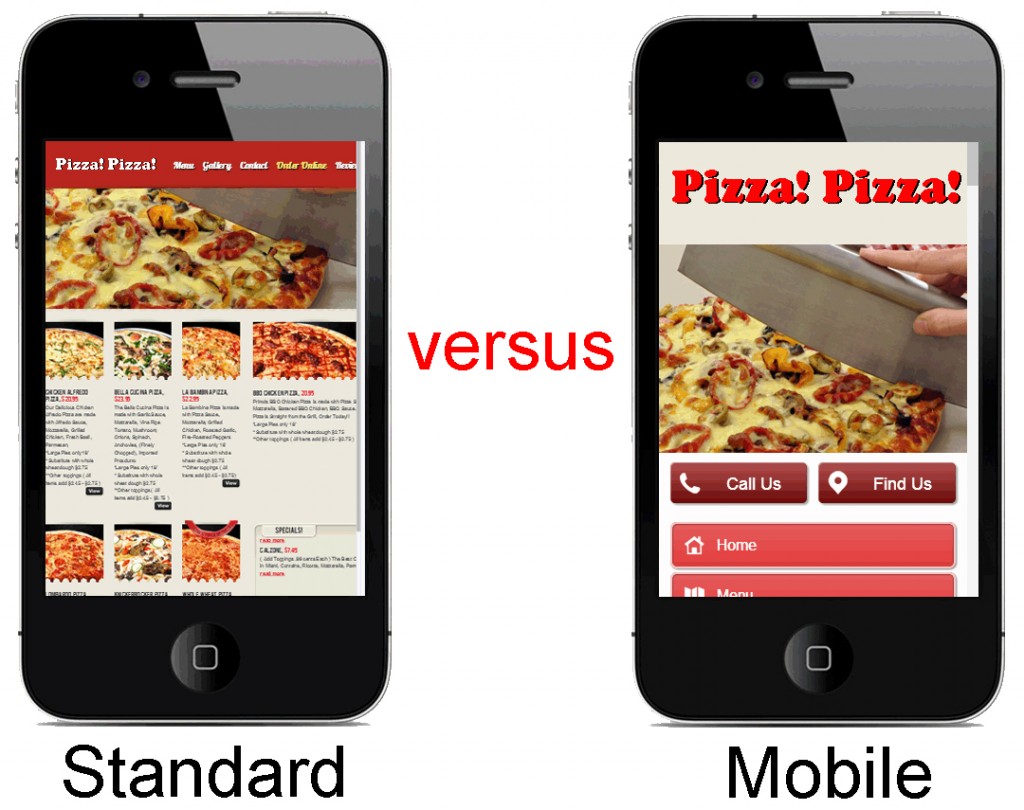From a recent study of Cisco, the amount of mobile-connected devices is forecasted to reach 11.5 billion in 2019 and surpass the global population at that time (7.6 billion). As the total sales of mobile devices keep rocketing, the more businesses especially e-commerce rush to convert their web content into mobile version. However, many are struggling to pull customers to their mobile sites and have no clue of what to do to fix it.
As the total sales of mobile devices keep rocketing, the more businesses especially e-commerce rush to convert their web content into mobile version. However, many are struggling to pull customers to their mobile sites and have no clue of what to do to fix it.
The point is mobile marketing is kind of a subset of digital marketing and needs its own marketing strategy. In comparison with online marketing, mobile marketing is “same same” but different! You wonder how different it is. Here is your answer.
1. Technology
As a new generation from digital marketing, mobile marketing requires a mobile platform to perform all of its functions. Still many online business owners are reluctant to make their website become mobile friendly.
As a result, they fail to expand their business through online marketing campaigns without noticing that most of potential customers turned away from them after visiting their website by smartphones or tablets. Unless the page is mobile optimized, it will absolutely look like a jungle of tiny words or a mess of images and letters from a mobile device view point.

Hence, to make the most out of your mobile marketing, you need a mobile framework for your own website. Then your contents and elements from the desktop version will automatically be arranged in a grid and appear with the same proportions to mobile users’ eyes on many kinds of screens.
There are two popularly used approaches which are responsive web design and separate design for mobile users. This job can be done quickly if you have some certain knowledge of web design. Some e-commerce business owners, however, prefer out sourcing to maintain their mobile web version.
If you need a guideline to build a mobile friendly website, you can easily find some useful tips from my post on Subiz’s blog.
2. Audience
The way that mobile internet users interact with your websites is quick, distracting and impatient. They do searching, reading, watching and shopping in their short breaks between meetings, classes and household choirs as well as during their commute.
Their locations can be varied but have one thing in common is usually crowded and distracted for example bus stations and coffee shops. Interestingly, people doing shopping or looking for food often search for more information while they are actually in store, regarding to a research of Google and Nielsen.
Therefore, to grab their attention, you need to catch their eyes and minds instantly with big and impressive headlines, short but engaging content as well as fabulous design. These will effectively trigger some follow-up actions from your audiences and successfully made them enlist your page into their favorite sites to visit again next time.

Meanwhile, desktop users mostly spend relatively long time span on net surfing in front of a big screen monitor while sitting comfortably. They know clearly what they want or tend to do and go straight forward to search for necessary information.
Also due to a generous time budget and comfy position, they are more patient to scroll and type with mouse, touchpad and keyboard. For desktop using customers, offering them your full version of web content and features together with compensation pack for instance free e-book will keep them happy.
3. Outcome measurement
Normally the success of a traditional marketing campaign is measured by total sales subsequently after it. However, that method does not really work for digital marketing in general and mobile marketing specifically.
People usually use their mobile devices to search for information and compare prices. According to a research from Google, 70%of mobile searchers made a business call following their searching results.
Moreover, a mobile search can result in various follow up and additional actions for example share information, visit retail website, visit brick and motor store and make a purchase. No matter what the customer choose to perform, they all end up supporting your product and contributing greatly but quietly to your bottom line.
So mobile marketing is not only a selling channel but also plays the role of a stimulator and guidance.

To measure the actual outcome from a mobile advertising campaign, you should not solely focus on the immediate sales but look at the further and longer term result instead.
One common way is to track your customer’s behavior on mobile site by some available tools from Google Analytics like click through rate and click to call rate as well as analyzing report from Subiz live chat software. Also using special code and coupon for mobile payment can be taken into account for evaluating your mobile marketing strategy.
There are several cool digital marketing solutions for small e-commerce business presented on Subiz blog. Find out more here.
In A Nutshell
The key to success of mobile marketing is to discover and catch mobile user’s behavior and interactions on your mobile sites. In general, they always prefer something quick and convenient while using their mobile devices otherwise they would stick to their desktop which provides access to bigger and more detailed contents.
3 factors mentioned in this article are able to affect drastically to the outcome of any mobile campaign. Following these tips, you can deliver a satisfied mobile experience to your audiences and then win their heart and loyalty.
Plus, remember that mobile marketing will keep growing rapidly and never stop seeking for innovative and creative ideas.
The rule of thumb is thinking about what your potential customers need most. Then concentrate on their emotional and physical needs in all of your campaigns and do not dare to try new things as well as face new challenges.




